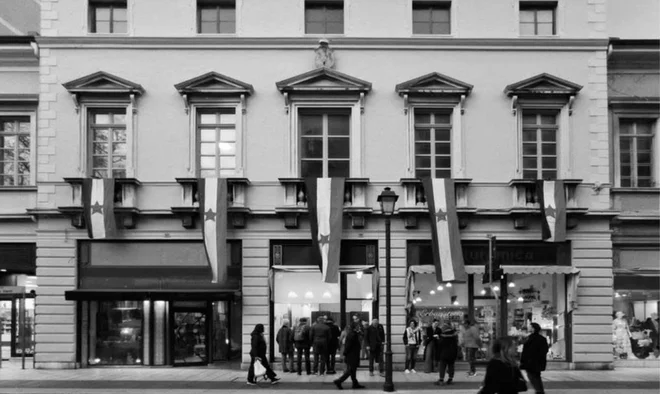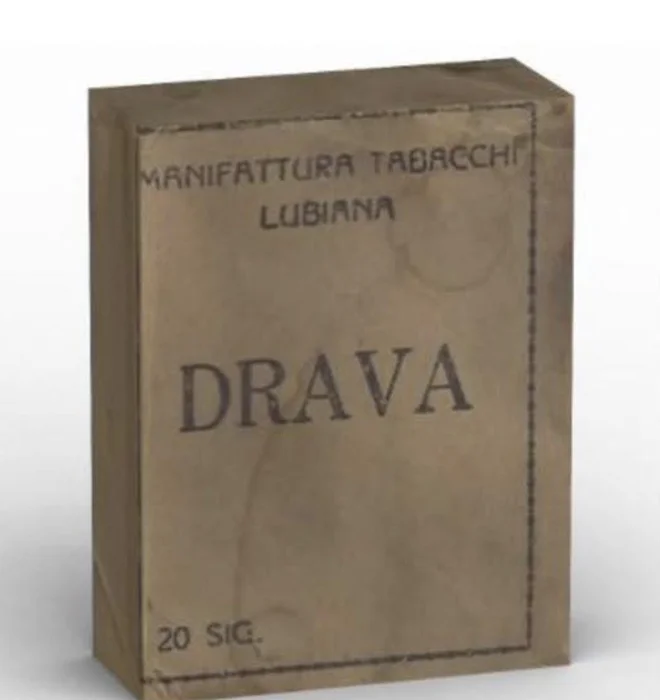Why was the Yugoslav flags hung in Gorizia?

“We want to respond to the newspaper writing Il Piccolojust as we explained their purposes to members of the Italian Police Unit who did not discover any irregularities in our behavior, « the Agorè Art Society wrote on their Facebook profile. This weekend, as part of their exhibition, the Yugoslav exhibitions in the center of Gorizia have been hung in the conclusion of their exhibition, where they had their premises so far.
Agorè Gorizia Society opened an anthological exhibition at the beginning of last week Ancora una – Agorè for a New Age (Another – Agorè for a new era), at which artists on both sides of the border presented themselves with their works. At the end of the exhibition, last Saturday, they also symbolically said goodbye to their premises opposite the Gorizia shopping home, where they have been home for the last three years. As is the opening of an exhibition for Coastal daily Explanation President of the Society Roberta RivaIt is unusual for social spaces to close in the year when Nova Gorica and Gorica together form the European capital of culture, but due to lack of municipal support, they can no longer be maintained. In the nine years since they have been working, more than 200 events have been organized, including collaborating with the Pixxelpoint International Festival in Novi Sad.
Flags have flattened after 80 years
As a conclusion of their exhibition, they imagined that through a window looking at the Verdi Corszo Gorizia, they would hung the Yugoslav flag with a red star, which immediately aroused a lot of excitement. He immediately wrote an online Diary of Trieste Il Piccolowho described the act as a provocation in Gorizia, and the municipality of Gorizia responded that it was a shameful act.
Thus, the Yugoslav flags hung across the windows of municipal palaces between May 1 and June 12, 1945. Photo: Agorè
The Agorè Society explained that their gesture hides an interesting story, which they wanted to present in this way. The municipal administration operated between 1865 and 1956 in the palace, where they have been home for the last three years (later moved to the Attems Palace). In the restaurant they rented, a box of shoes and a wrap were found during the renovation work under the piece of old furniture. The box included the Drava and Tobacco cigarettes, which were made in Tobačna Ljubljana during the Italian occupation. In the wrap, however, five differently sized and sewn Yugoslav flags were folded.

Drava cigarettes found together with flags. Photo: Agorè
“We quickly realized that the number of flags matches the number of windows in the hall of the municipal council on the first floor of the palace. They were spread there during the Yugoslav takeover of the city, between May 1 and June 12, 1945, ”they stated. They talked about the discovery with Mark Klavoro from the Gorizia Museum, which also agreed to hand over the items. Considering that the Society prepared the historical exhibition of Gorizia official documents between 1945 and 1946, they were once again spread in the same place on the 80th anniversary of the event.
Protest due to the honorary citizenship of Mussolini
« Our exhibition consisted of a historical and artistic part, » he is for Work said Anton Špacapan Vončinaan artist who is a member of the Agorè Society and who also presented himself at the last social exhibition. He mentioned that their society was also politically active and was among the initiators of protests for the deprivation of honorary citizenship to Mussolini in Italy’s Gorizia. « It is outrageous that the European capital of culture has such an honorary citizen, so we are preparing a new protest against the one that is expected to be on April 12 in front of the municipal palace, » he announced.
The Go! 2025 Institute, which leads to the events of the European Capital of Culture 2025, said that the exhibition of the Agorè Society was not organized under their auspices.








